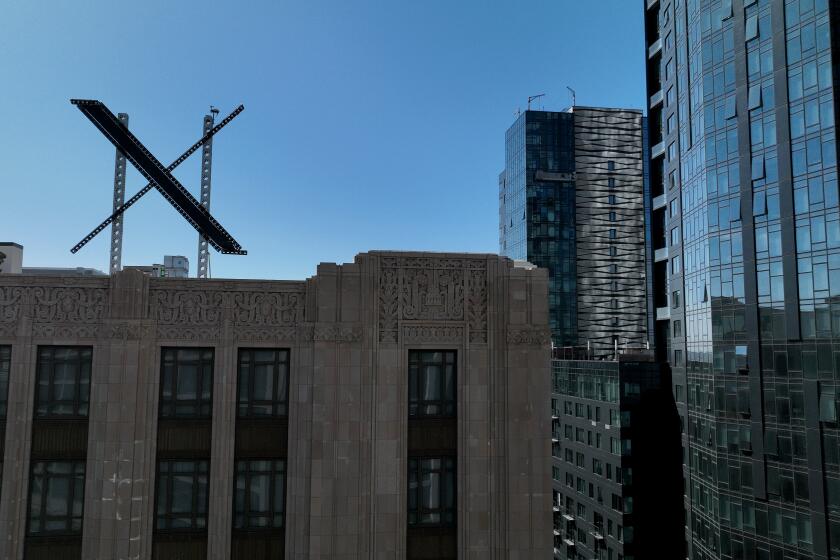Columbia S&L; Seized; Cost May Top $1.5 Billion : Thrifts: The takeover comes as regulators reject two bids for the firm’s huge junk bond portfolio.
Columbia Savings & Loan, which once bragged that it was the nation’s best-run savings and loan, was seized by government regulators Friday, ending a dizzying 18-month collapse of the maverick thrift that could ultimately cost taxpayers more than $1.5 billion.
The 1 p.m. seizure of the Beverly Hills-based thrift--which collapsed largely because of massive losses on its junk bonds--ends another chapter in the spectacular demise of financier Michael Milken’s once-powerful junk bond machine, of which Columbia was a critical component.
The takeover came as regulators rejected two bids to buy the thrift’s junk bonds, valued at $2.1 billion as of Dec. 31. The two bidders were Goldman, Sachs & Co. and a Canadian-led partnership called Gordon America, sources close to the bidding said.
Officials with the Office of Thrift Supervision, the primary S&L; regulator, said the bidders offered too little money as a down payment and would have received overly generous cash flows from the bonds. In a statement, OTS Director Timothy Ryan added that the buyers would have received a disproportionate share of benefits if the junk bond market recovered and had little to lose if the market continued falling.
Customers are expected to be unaffected by the seizure, and Columbia’s 23 branches will be open under normal hours. As with any bank or thrift taken over by regulators, accounts are insured for up to $100,000.
Columbia, now the nation’s 16th-largest thrift, has $6.6 billion in assets and $6 billion in deposits. Edward G. Harshfield, a former Citicorp executive who led Columbia’s efforts to sell the bonds, resigned Friday as chief executive.
With Columbia’s seizure, taxpayers now hold junk bonds with a face value of about $7 billion. The federal Resolution Trust Corp., which is mopping up the nation’s thrift mess, is now believed to rank only behind insurance firms Prudential Insurance Co. of America and First Executive Corp. in junk bond holdings, bond experts said.
Under former Chief Executive Thomas Spiegel, Columbia used taxpayer-insured deposits to buy the risky, high-yield bonds as if there was no tomorrow. The thrift solicited funds from customers at sky-high interest rates and invested the money in junk bonds that reaped even higher returns.
At one point, Columbia was the nation’s most profitable thrift, and Spiegel, who earned $9 million in 1985, was by far the S&L; industry’s highest paid executive. He earned some 20 times what other major thrift executives made that year.
But Columbia unraveled with remarkable swiftness starting in mid-1989 with the collapse of the junk bond market. Columbia hemorrhaged in a way few financial institutions have, losing $1.4 billion over five consecutive quarters leading up to last Sept. 30. Columbia is now believed to be insolvent by some $1.2 billion, and further losses could occur.
Although projections of Columbia’s cost to taxpayers are inexact at this point, sources have said for weeks that the thrift’s failure could easily cost at least $1 billion. Now, experts believe, that number may be low.
“Clearly this will be one of the costliest thrift failures. At a minimum, it will cost $1.5 billion and it could be more,” said Miami consultant Kenneth H. Thomas, who specializes in following thrifts with junk bond holdings.
Under normal circumstances, regulators would have seized Columbia months ago. But they held off, putting it under tight restrictions instead and hoping that its current management could sell the bonds so taxpayers would not inherit them.
In July, Harshfield and Columbia’s advisers at First Boston Corp. struck a deal with Gordon America to sell the bonds for $3 billion. That deal would have been 90% financed by Columbia itself and would have allowed Gordon to default and walk away from the deal if the bonds soured further.
But OTS chief Ryan rejected the sale in September because of objections to the financing and because he and RTC Chairman L. William Seidman believed that the government needed to first develop a policy allowing a financed sale of junk bonds.
Ryan’s decision no doubt will continue to generate controversy. Critics have accused him of blowing what may have been Columbia’s only chance to get a decent price. If nothing else, they argue, he would have gotten for taxpayers a $300-million down payment from Gordon.
New bids were then solicited. Although seven well-financed groups showed interest, only two--Goldman Sachs and Gordon America--actually bid. Ryan said those new bids “were simply unacceptable.” Regulators added that OTS’ financial adviser, Kidder, Peabody & Co., and Columbia’s financial adviser, First Boston Corp., agreed.
Technically, Columbia until Friday was controlled by Spiegel and his family, although the stock has been worthless since last year and regulators have been supervising it closely. The thrift was formed in 1974 by Spiegel’s father, Abraham, who developed close ties to such politicians as Los Angeles Mayor Tom Bradley. Thomas Spiegel became chief executive in 1977.
In 1982, Spiegel linked up with Milken, the former Drexel Burnham Lambert executive who on March 4 is scheduled to begin a 10-year prison sentence for federal securities violations. The two men had met at a dinner party and became close friends. Taking advantage of industry deregulation, Spiegel bought junk bonds through Milken.
Columbia soon became the biggest and most visible of S&Ls; that invested in the risky securities, holding more than $4 billion worth in 1989. But the thrift unraveled as the junk bond market tumbled and federal legislation forced thrifts to sell their bonds within five years. Under accounting rules, thrifts such as Columbia were then forced to constantly devalue their holdings and recognize losses when junk bond prices tumbled.
Spiegel resigned as Columbia chief executive on Dec. 31, 1989. At the time, government regulators had secretly started investigating his spending at Columbia on such items as plane trips, vacations and guns. In a civil proceeding, regulators are seeking $25 million in restitution from Spiegel for allegedly squandering Columbia funds. Spiegel denies the allegations.
Spiegel is now the subject of what amounts to a legal full-court press. He has been told he probably will be indicted soon in New York in connection with his ties to a Milken partnership and “parking” of stock. In addition, sources said, federal investigators in Los Angeles are reviewing his spending habits at Columbia to determine if criminal charges can be brought. He also faces an OTS administrative hearing this summer related to the spending.
As with all S&Ls; seized by the government, Columbia will operate under the supervision of the RTC. Its branches and deposits will ultimately be offered for sale, although there is no guarantee they will be bought.
COLUMBIA’S PROFIT & LOSS
Columbia Savings & Loan: Net income / loss for each year (millions) 1985: $122.3 1986: $193.5 1987: $119.3 1988: $65.0 1989: -$591.1 1990*: -$781.8 * through Sept. 30
More to Read
Inside the business of entertainment
The Wide Shot brings you news, analysis and insights on everything from streaming wars to production — and what it all means for the future.
You may occasionally receive promotional content from the Los Angeles Times.










